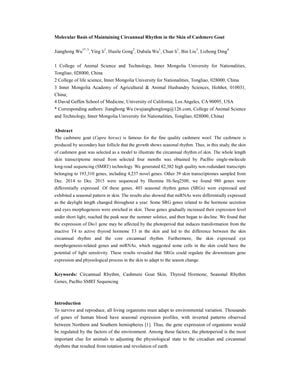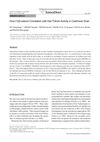Molecular Basis of Maintaining Circannual Rhythm in the Skin of Cashmere Goat
April 2020
in “
bioRxiv (Cold Spring Harbor Laboratory)
”

TLDR Goat skin changes with the seasons due to genes affected by daylight and hormones.
In the study of the cashmere goat's skin to understand the molecular basis of circannual rhythm, researchers used PacBio single-molecule long-read sequencing to generate 82,382 high-quality non-redundant transcripts from 193,310 genes, including 4,237 novel genes. Additionally, Illumina Hi-Seq2500 sequencing of 39 skin transcriptomes collected monthly over a year identified 980 differentially expressed genes, with 403 seasonal rhythm genes (SRGs) showing a seasonal expression pattern. These SRGs were linked to hormone secretion and eye morphogenesis and varied with daylight length, peaking near the summer solstice. The study also found that the Dio1 gene expression might be influenced by photoperiod, affecting the transformation of inactive T4 to active thyroid hormone T3 in the skin, which could explain differences in skin circannual rhythm. Furthermore, the expression of eye morphogenesis-related genes and miRNAs suggested potential light sensitivity in skin cells, indicating that SRGs could regulate gene expression and physiological processes in the skin in response to seasonal changes.
